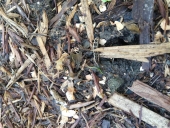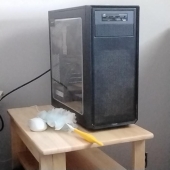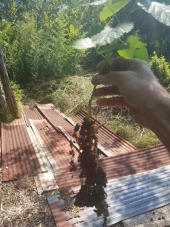
We manage a 40 acre wildlife area of the Texas Hill Country in the Edwards Plateau at about 3030 ft above sea level. The region is notable for its karst topography and tall rugged hills of limestone. The terrain throughout the region is punctuated by a thin layer of topsoil and a large number of exposed rocks and boulders, making the region very dry and prone to flash flooding. Native vegetation in the region includes various yucca, prickly pear cactus, native grasses and wildflowers. The predominant trees in the region are Ashe Juniper, Shin Oak and Texas Live Oak. Soil is alkaline consisting of caliche and clay.










